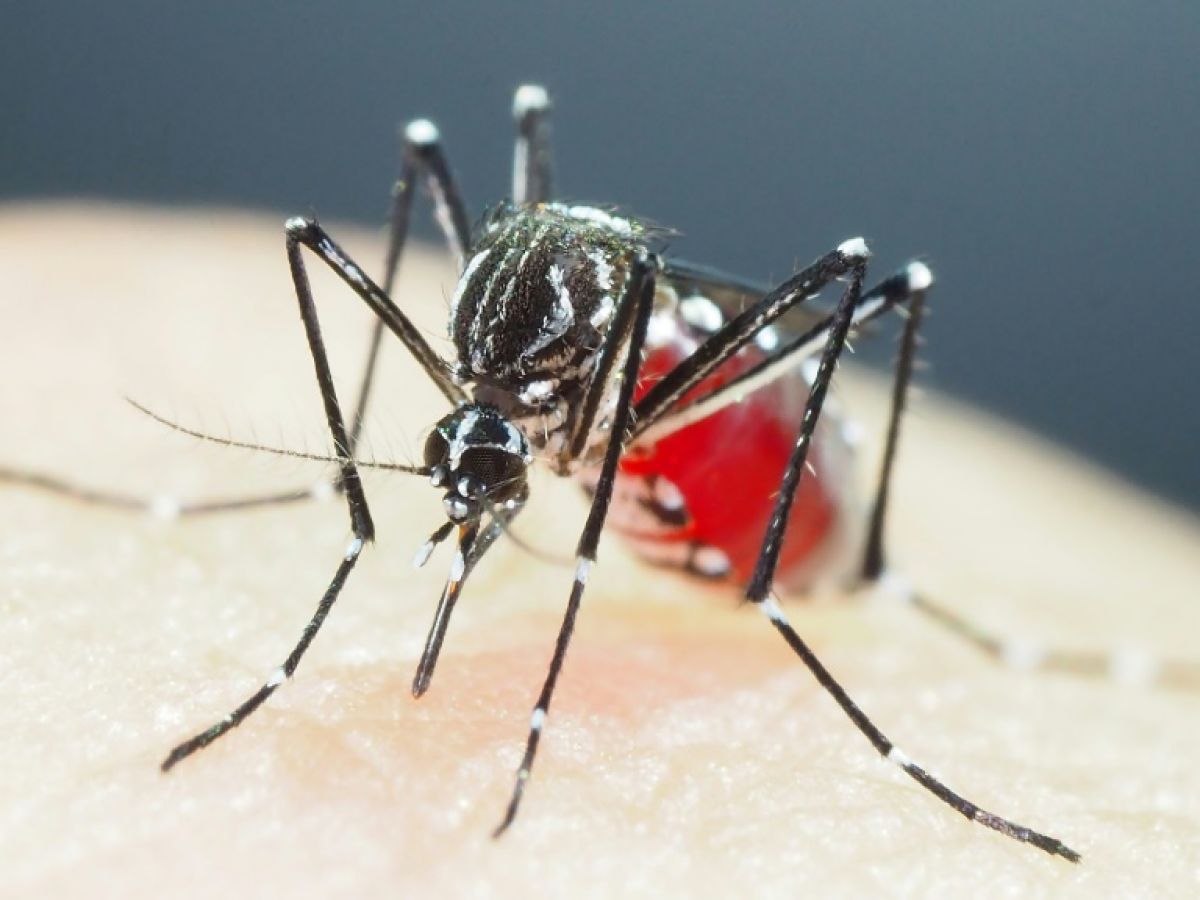How can a mosquito detect the presence of a human in its environment from several meters away, get close to him and then land on his skin with such precision? To do this, it uses an arsenal of means. And to refine its position, the mosquito Aedes Aegypti (present in French territory, in the Antilles, in Guyana and in Mayotte) uses infrared, highlights a study published in the journal Nature.
The mosquito first detects the tiny fluctuation of CO2 in the air
The insect is one of the main vectors of transmission to humans of viruses such as Dengue, yellow fever, zika or chikungunya. Collateral damage has the simple goal of feeding on blood, preferably human.
To achieve this, it simultaneously integrates several means of detection, recalls the study conducted by researchers from the University of California in Santa Barbara (United States). Aedes Aegypti first detects the tiny fluctuation of carbon dioxide (CO2) in the air, induced by the breathing of a human being. This detection operates up to more than ten meters from the subject.
Read alsoMosquito Skins: Why You Get Bitten All the Time
Infrared radiation to replace a "poor visual acuity"
According to this study, it has the effect of:"to increase its locomotor activity and increase its reactivity to other stimuli from the host". In particular, olfactory clues specific to human odor, detectable up to one to two meters.
Only, Aedes Aegypti being equipped with a "poor visual acuity", the effectiveness of these clues in finding the path to the target is reduced by possible air currents.
On the other hand, the insect knows that it has reached its goal once it is very close to human skin, less than ten centimeters away, by detecting humidity and heat. All that remains is to get there.
Read alsoThe tiger mosquito has finished its colonization in France
Odor, CO2 and infrared
The University of California team, led by Professor Craig Montell, sought to find out whether Aedes Aegypti could, like the rattlesnake or certain beetles, also use the infrared radiation emitted by all living beings to refine its position.
The human body naturally loses energy, partly in the form of infrared radiation. The same radiation that reveals, with the help of night vision goggles, the shape of a man or an animal at night.
The researchers conducted a behavioral experiment by placing 80 female mosquitoes in a cage, a few centimeters apart from two plates, one at room temperature of 29.5°C, typical of a hot country, and the other which could be brought to that of human skin: 34°C. This device also allowed the emission of a discreet cloud of CO2 and the diffusion of the smell of human sweat emanating from an old glove.
By then combining these elements and filming the mosquitoes' behavior, they found that a single cue, CO2, odor or infrared radiation from the plate brought to skin temperature, resulted in a very weak response. It was significantly more marked with a combination of odor and CO2. And maximal when combining infrared radiation, odor and CO2.
A mosquito of the species Aedes aegypti, in the laboratory of the Center for Parasitology and Vector Studies of the CONICET Research Institute in La Plata, Argentina, on March 26, 2024 AFP – Luis ROBAYO
Human skin is particularly attractive to mosquitoes
The study states that the surface temperature of other mammals in the human environment can vary by up to 10 degrees Celsius. Unfortunately, it's the temperature of human skin. "which is most attractive to mosquitoes", according to the study.
Which specifies that according to the observations, Aedes Aegypti can detect infrared radiation from the skin up to at least 70 centimeters from the subject. At a distance " intermediate " between the one where it detects CO2 and body odors on the one hand and the heat and humidity of the skin on the other.
Read alsoHow much do mosquitoes cost us? A staggering amount!
The effectiveness of loose clothing demonstrated
The authors assume that "Infrared detection could be widely used among blood-feeding mosquitoes to navigate towards warm-blooded hosts." And if so, researchers suggest the possibility of designing “more effective mosquito traps”.
The team from the University of California explains this ability by the heating via infrared radiation of the tips of neurons located on the antennae of the insect. This warming "in turn activates thermosensitive receptors", according to the study.
This study also clarifies why loose clothing is particularly effective in preventing bites. Not only do they prevent the mosquito from reaching our skin, but they also allow infrared rays to dissipate between our skin and clothing so that mosquitoes cannot detect it. Credits: DeBeaubien and Chandel et al.
With AFP


